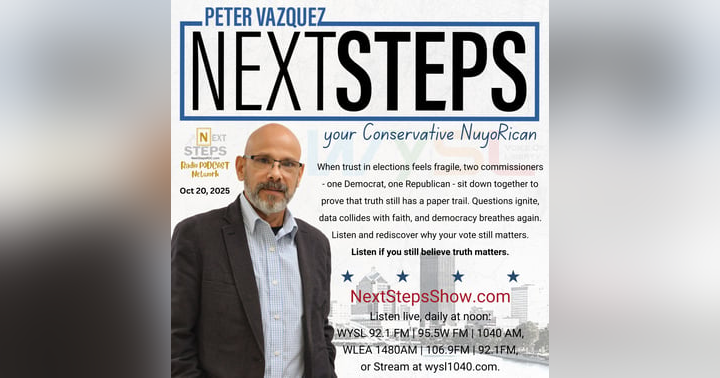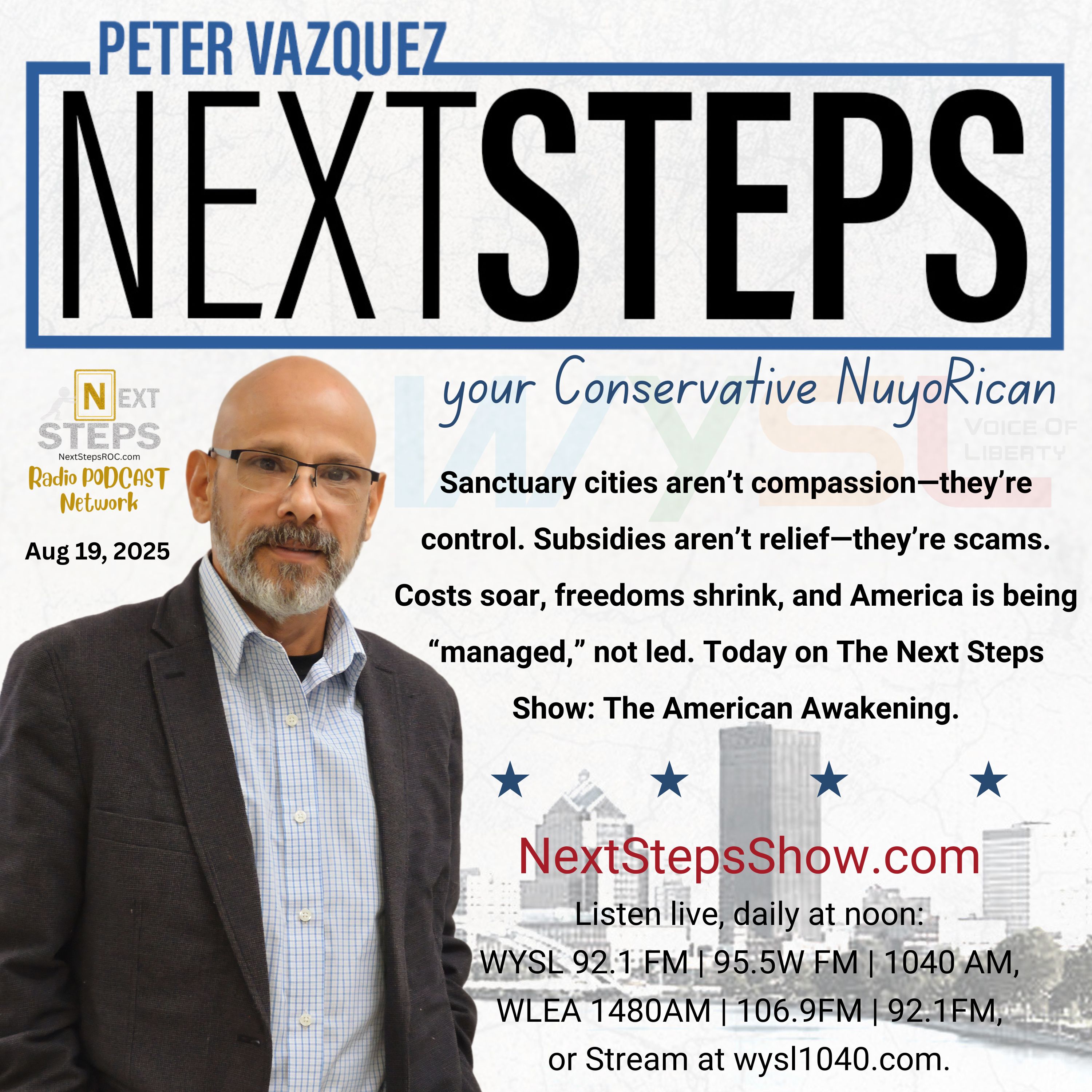
Sanctuary city policies: Compassion Without Accountability Is Not Compassion
It Is Control With Better Branding.
Sanctuary city policies are often presented as compassionate and welcoming to immigrants. However, a closer examination reveals that these policies can have unintended negative consequences and raise ethical questions. In this blog post, we will delve into the practical challenges, economic burdens, and ethical considerations surrounding sanctuary city policies, challenging the notion that they are purely driven by compassion.
This discussion closely mirrors the themes explored in our latest podcast episode, "Managed, Not Led: The Truth Behind Progressive Control." In that episode, we discussed how progressive policies, often sold under the guise of compassion, can mask a deeper agenda of control and management. We will see how the same principles apply to sanctuary cities, revealing the complexities and unintended consequences that often go unaddressed in mainstream narratives.
Unpacking the Sanctuary City Myth
The term “sanctuary city” evokes images of safe havens—places where undocumented immigrants can live without fear of deportation. Proponents of these policies often frame them as acts of compassion, offering refuge to vulnerable populations seeking a better life.
However, this romanticized view often obscures the complexities and challenges that arise when these policies are put into practice. It is crucial to unpack the sanctuary city myth by examining the actual impact of these policies on both immigrant communities and the broader society. This examination requires us to move beyond emotional appeals and engage with the data, analyze the economic realities, and confront the ethical dilemmas that sanctuary city policies create.
We must ask ourselves: are sanctuary cities truly compassionate, or do they create a system where certain populations are managed and controlled, rather than empowered? Do these policies genuinely improve the lives of undocumented immigrants, or do they create a false sense of security that ultimately leaves them vulnerable? Are the economic burdens and social costs of sanctuary cities fairly distributed, or do they disproportionately impact certain communities?
The Promise of Compassion vs. The Reality on the Ground
The initial promise of sanctuary city policies is undeniably appealing. The idea of offering refuge to vulnerable populations, shielding them from the threat of deportation, and allowing them to live and work without fear resonates with many people’s sense of compassion and justice.
However, the reality on the ground often falls short of this idealistic vision. While sanctuary policies may offer a degree of protection from federal immigration enforcement, they do not eliminate the risk of deportation entirely. Undocumented immigrants in sanctuary cities can still be deported if they commit crimes or come to the attention of immigration authorities through other channels.
Moreover, sanctuary policies can create a false sense of security, leading some immigrants to believe they are entirely safe from deportation—a misconception that leaves them vulnerable to exploitation or abrupt policy shifts.
Furthermore, the promise of access to services often clashes with the reality of limited resources. Sanctuary cities are frequently overwhelmed by the demand for social services, healthcare, and education, straining local budgets and reducing the quality of services available to all residents. This can lead to resentment and division within the community, undermining the very compassion that sanctuary policies are intended to promote.
Unintended Consequences: Examining the Practical Challenges
Strain on Local Resources
As more undocumented immigrants are drawn to sanctuary jurisdictions, the demand for social services, healthcare, education, and affordable housing increases.
-
New York City: Cost estimates for assisting asylum seekers were updated in 2023 to add $2.33 billion in expected city expenses in FY2024 and $4.1 billion in FY2025.
-
Over the past few years, NYC has reportedly spent over $7 billion in taxpayer funds to house and care for undocumented immigrants.
Costs Per Migrant
-
Denver: Sanctuary-style support has cost $356 million for around 45,000 migrants since 2022—roughly $7,900 per migrant, representing nearly 8 percent of the city’s total 2025 budget.
Federal Funding Risk & Legal Conflict
-
Executive Order 13768 (2017) attempted to disqualify sanctuary jurisdictions from receiving certain federal grants.
-
Executive Order 14159 (2025) sought to deny federal funds to sanctuary jurisdictions and impose penalties, though a federal judge blocked those provisions.
-
In 2025, the U.S. Justice Department sued Minnesota over its sanctuary policies, arguing they undermine public safety and obstruct federal enforcement.
Crime and Public Safety Risks
The claim that sanctuary cities increase crime is highly contested.
-
A Stanford-led analysis (2010–2015) found no significant rise in violent or property crime following sanctuary adoption.
-
Some sanctuary jurisdictions even report higher median household income and lower poverty.
-
Critics counter that reduced enforcement pressure can embolden criminal actors.
-
The data remain ambiguous—policy context, policing models, and demographics all play key roles.
Migration Incentives and Population Pressures
Sanctuary signals can attract further undocumented migration, increasing strain on housing, infrastructure, and public safety.
During Texas’s Operation Lone Star, the state claimed over 119,200 migrants were bused to sanctuary cities, deepening the logistical burden on those municipalities.
Dependency and Administrative Overreach
By layering subsidies and services, sanctuary policies risk creating cycles of dependency, where beneficiaries have less incentive to self-sustain.
Over time, bureaucracies expand from support to control, breeding inefficiency, waste, and political favoritism.
Equity Rebranded as Control: The Real Agenda?
The language of “equity” has become a linchpin in justifying many sanctuary policies. Proponents argue these policies ensure that all residents—regardless of immigration status—have equal access to opportunity.
However, this equity framing serves as a pretext for control. Expanded services and benefits often foster dependency rather than empowerment. Focusing on redistribution also distracts from deeper problems—poor education systems, limited job training, and barriers to small-business growth.
As we noted in Managed, Not Led, “equity” in the hands of progressives tends to translate into top-down mandates—control dressed as fairness.
- Donald Trump (2016): “We will end the sanctuary cities that have resulted in so many needless deaths. Cities that refuse to cooperate with federal authorities will not receive taxpayer dollars.”
- Greg Gutfeld: “Sanctuary cities are a lot like hitchhiking. In the abstract, it feels really good until you feel dead.”
- Noam Chomsky: “The more you can increase fear of drugs and crime, welfare mothers, immigrants and aliens, the more you control all of the people.”
Together, these statements—though ideologically diverse—highlight how compassion and fear alike can be tools of political management.
The Economic Burden: How Sanctuary Policies Drive Up Costs
Sanctuary jurisdictions provide public schooling, emergency healthcare, and social services to all residents—costs that fall on taxpayers.
-
In FY2023, New York City spent $1.45 billion on migrant housing and assistance (a mix of city, state, and federal funds).
-
Limiting cooperation with ICE also raises enforcement and incarceration costs, as deportations of criminal aliens become more complex and delayed.
-
While undocumented immigrants contribute through taxes and labor, the net fiscal impact remains negative in high-stress cities already facing budget shortfalls.
Ethical Considerations: Whose Compassion Is It?
Sanctuary policies prioritize undocumented immigrants’ needs over those of citizens and legal residents—raising hard questions about fairness.
-
Equity vs. Fairness: Are citizens right to feel neglected when services flow disproportionately to noncitizens?
-
Victims’ Rights: Does limiting ICE cooperation hinder justice for victims of crime?
-
Rule of Law: Sanctuary policies challenge federal authority and constitutional balance.
-
Moral Hazard: Shielding people from consequences can undermine lawful immigration and accountability.
True compassion requires order, fairness, and integrity—not sentimentalism without responsibility.
The Van-bōōl-zal-ness Crisis: A Wider Application
The Van-bōōl-zal-ness Crisis symbolizes the broader collapse of leadership where ideology eclipses practicality, and emotion trumps liberty. Sanctuary city policies are its local expression: well-intentioned but control-driven, short-sighted, and politically useful.
Overcoming this crisis requires critical thinking, moral courage, and the restoration of individual responsibility over bureaucratic dependence. It means choosing liberty over management.
Call to Action: Moving Beyond Rhetoric Toward Real Solutions
It is time to replace slogans with solutions.
-
Secure the Border & Enforce Existing Laws. Legal entry must mean something, or citizenship means nothing.
-
Reform Immigration Pathways. Streamline legal processes to meet workforce needs while protecting sovereignty.
-
Address Root Causes Abroad. Encourage stability, trade, and opportunity in source nations to reduce migration pressures.
-
Promote Assimilation and Integration. Invest in English education, job training, and civic engagement for immigrants ready to build and belong.
Reclaiming Freedom and Liberty
The myth of compassionate sanctuary cities deserves exposure. Noble intentions cannot excuse failed outcomes. Compassion without accountability becomes control—and control breeds dependency.
As we emphasized in Managed, Not Led: The Truth Behind Progressive Control, true compassion empowers people to stand on their own. It does not bind them to the state.
Freedom, responsibility, and the rule of law remain the pillars of a just society. To preserve them, we must demand policies grounded in realism, fairness, and respect for sovereignty—before compassion becomes our undoing.





